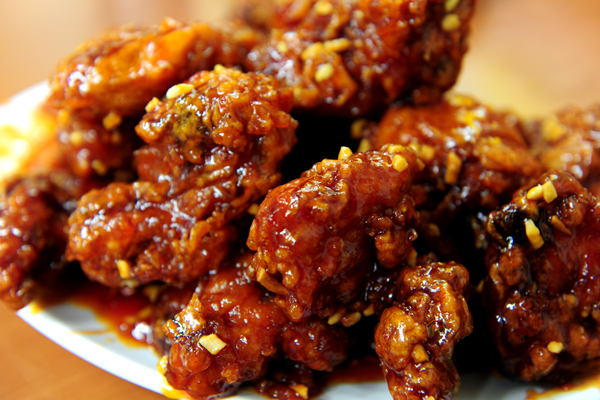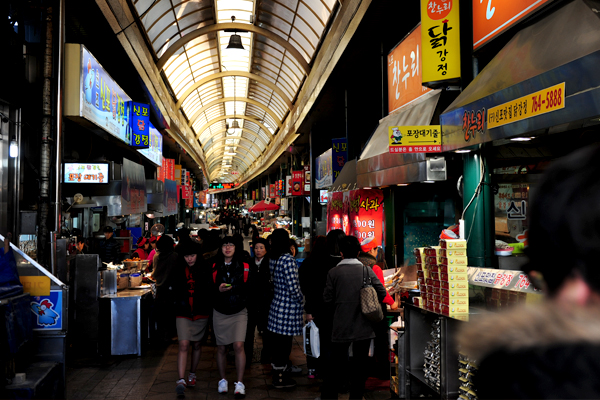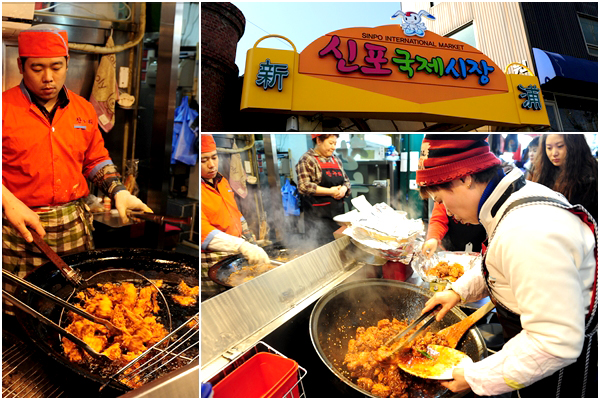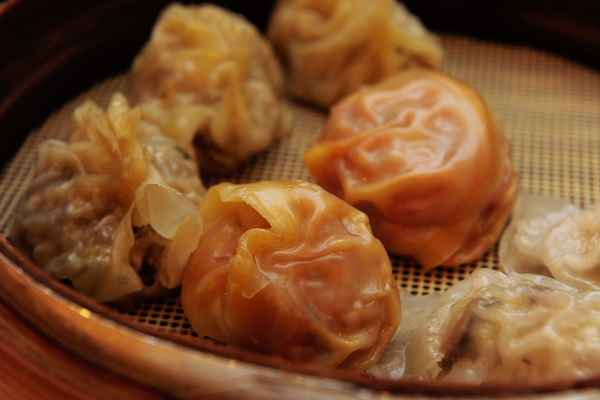Sujebi (
Korean pronunciation: [sudʑebi],
South Korea) or
milgaru
ddeudeo guk (
[milɡaɾu
t͈ɯːdʌɡuk],
North
Korea) is a
Korean traditional soup consisting of dough
flakes roughly torn by hand, with various vegetables. The flavor and recipe
resemble
kalguksu, except
that the latter is made with noodles rather than wheat flakes. It is commonly
considered a dish to consume on rainy days, along with
bindaetteok.
The
broth for
sujebi is usually
made with dried
anchovies,
shellfish, and
kelp. Added to this broth are soft noodles and various vegetables or
kimchi, most often
zucchini and
potatoes
Korean people began to eat
sujebi and
guksu (국수 noodles), both
dishes made of wheat flour, from the early
Goryeo period (
935~
1392), but the name
sujebi (earlier
sujeop-eo) dates from the mid
Joseon period.
Sujeop-eo is a combined
hanja word
comprising the terms
su (hanja:
手; hangul: 수; literally "hand")
and
jeop (hanja:
摺; hangul: 접어 or 접다; literally
"folded" or "folding").
From the Joseon period, people started making various types of
sujeobi
according to various purposes.
Sujebi is today considered a typical
commoner's food, but in the past, it was relatively rare and used for special
occasions especially
janchi
(잔치; feast, banquet) such as
dol janchi (the celebration of a baby's first
birthday).
In
North Korea,
sujebi is called
milgaru ddeudeo guk (밀가루뜨더국), which is the words
comprising three words:
milgaru (밀가루; literally "wheat flour") +
ddeudeo (뜯어; literally "tearing" or "torn")
guk (국; literally
"soup").
( sources: wikipedia)
"Sam-sek" means" three colour" ; "Nakji" means " octopus"
Ingredients:
600g of all purpose flour ( divide it for 200g each )
1/2 carrot
50g spinach
10 cups of water for preparing the broth
8 dried anchovies
1 10cm-square dried kelp ( optional, if you can't get it)
1 potato
1 onion
1 tsp minced garlic
1 Tsp soy bean sauce ( In Korea , we call it "국간장 " Kuk-kan-jang, soy bean sauce for preparing the broth or soup )
salt to taste
cooking oil 1 1/2 Tsp ( 1/2 Tsp for each 200g of flour)
water or carrot, spinach juice 15 Tsp or more ( 5 Tsp or more for each 200g of flour). (Please don't pour all the water at the same time, adjust it accordingly; otherwise, the dough will become a runny dough)
coarsely chopped spring onion
Method:
1. Grate carrot and squeeze out carrot juice.
2. Blench spinach with water to obtain spinach juice.
3. Divide the flour into 3 bowls and add spinach and carrot juice to each flour bowl respectively, to make green, orange and white flour dough.
4. Add water/ juice, oil and a pinch of salt to the flour, to obtain the right elasticity. The dough should be kneaded thoroughly to get stretchy enough to tear out 2 mm thick pieces. Roughly form into a ball of dough and cover with a damp cloth or put in a plastic bag for at least 40 minutes.
5. Slice the potatoes into thin half-moon shaped pieces. Set aside.
6. Slice the onion. Set aside.
7. In a pot, make the Sujebi broth by boiling anchovies and dried kelp, boil it for about 15-20 minutes, season the broth with soy sauce and salt.
8. Add the sliced potatoes, onion to the broth and let it come to boil once again before putting in Sujebi pieces. Using your hand, first stretch out a portion of the dough and tear off small patches of it into the broth.
9. When the broth comes to boil once more, add octopus and minced garlic.
10. Place it in a bowl and garnish with chopped spring onion, sprinkle the pepper.
11. Serve it while it is hot.
P/s: If you think using vegetable juice is too much work for you, use only water to make the dough. You can also prepare the Sujebi without the octopus, in this case, you can't name this dish as " Sam-sek-nakiji-sujebi" because "Sam-sek" means " 3 colour"; "Nakji" means "Octopus". You can only call it " Sujebi"





















































